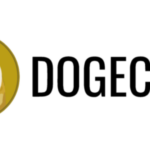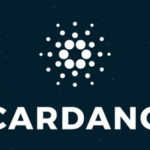Comparing Ethereum and Solana for Long-Term Profit Potential

Ethereum and Solana are two prominent players in the cryptocurrency arena, each offering unique features and potential for long-term gains. Ethereum has established itself as a leader in the altcoin market, known for its smart contract capabilities and decentralized finance (DeFi) ecosystem. On the other hand, Solana has been gaining traction with its impressive performance metrics, attracting attention within the crypto community. Let’s delve into a comparative analysis of these two platforms.
One crucial aspect to consider when comparing Ethereum and Solana is their on-chain volume and transaction activity. Both platforms have exhibited substantial growth, but there are distinct differences in their transaction volumes and user engagement. Solana has experienced remarkable growth in its DeFi sector, reaching a peak daily on-chain volume of around $3.4 billion since October 2023. This surge underscores Solana’s increasing adoption and activity in decentralized finance. In contrast, Ethereum has maintained significant daily transaction volumes, surpassing $7 billion during a recent market downturn on August 5, showcasing its continued dominance in the crypto sphere.
In terms of transaction count and user activity, Solana holds an advantage with over 979,000 active addresses in the last 24 hours compared to Ethereum’s 454,000 active users. Additionally, Solana outperforms Ethereum in daily transaction volume, recording 33.08 million transactions in a single day, significantly exceeding Ethereum’s 1.03 million transactions. These statistics underscore Solana’s growing popularity and its capacity to efficiently handle a higher transaction volume.
When examining tokenomics, including market capitalization and coin supply, Ethereum leads with a market capitalization of $311.9 billion, approximately 4.6 times higher than Solana’s market cap of $66.7 billion. Despite Ethereum’s larger market cap, Solana has been experiencing rapid growth, reflecting its expanding influence in the crypto market. Ethereum has a total supply of around 120.28 million coins, whereas Solana boasts a larger circulating supply of approximately 466.2 million SOL coins. This variance in supply can impact the long-term value and price potential of each cryptocurrency.
Another critical factor to consider is the inflationary versus deflationary nature of the coins. Solana operates with an inflation rate of about 30%, continuously introducing new SOL coins into circulation, which may affect the coin’s long-term value as the total supply increases. In contrast, Ethereum follows a deflationary model, with recent upgrades like Ethereum Improvement Proposal (EIP) 1559 introducing mechanisms to burn a portion of transaction fees, reducing the total supply of ETH over time. This deflationary approach could enhance ETH’s value as demand for the coin grows.
In evaluating the short-term and long-term outlooks of Ethereum and Solana, Solana’s higher transaction volume and active user base suggest strong short-term performance. Its rapid growth in the DeFi space and high transaction counts indicate potential gains for investors seeking immediate returns. Conversely, Ethereum’s established presence and deflationary model position it favorably for long-term investment. Ethereum’s continued dominance in DeFi, coupled with ongoing upgrades, supports sustained growth potential. The deflationary nature of ETH further enhances its value proposition as the supply decreases over time.
In conclusion, choosing between Ethereum and Solana for long-term gains involves assessing transaction activity, tokenomics, and market trends. While Solana demonstrates impressive short-term performance with high transaction volumes and active user engagement, Ethereum’s established ecosystem and deflationary supply model make it a strong contender for long-term growth.




